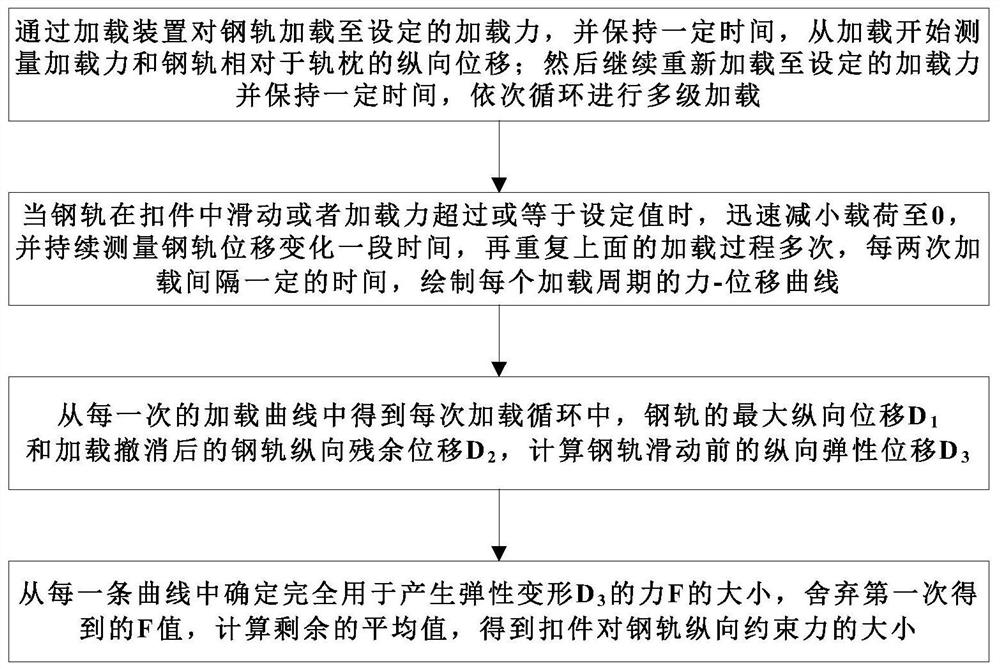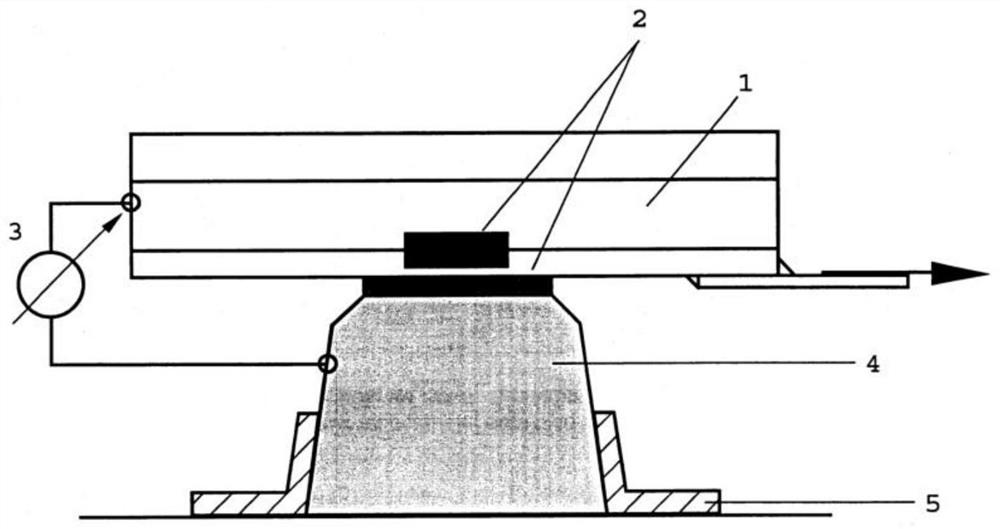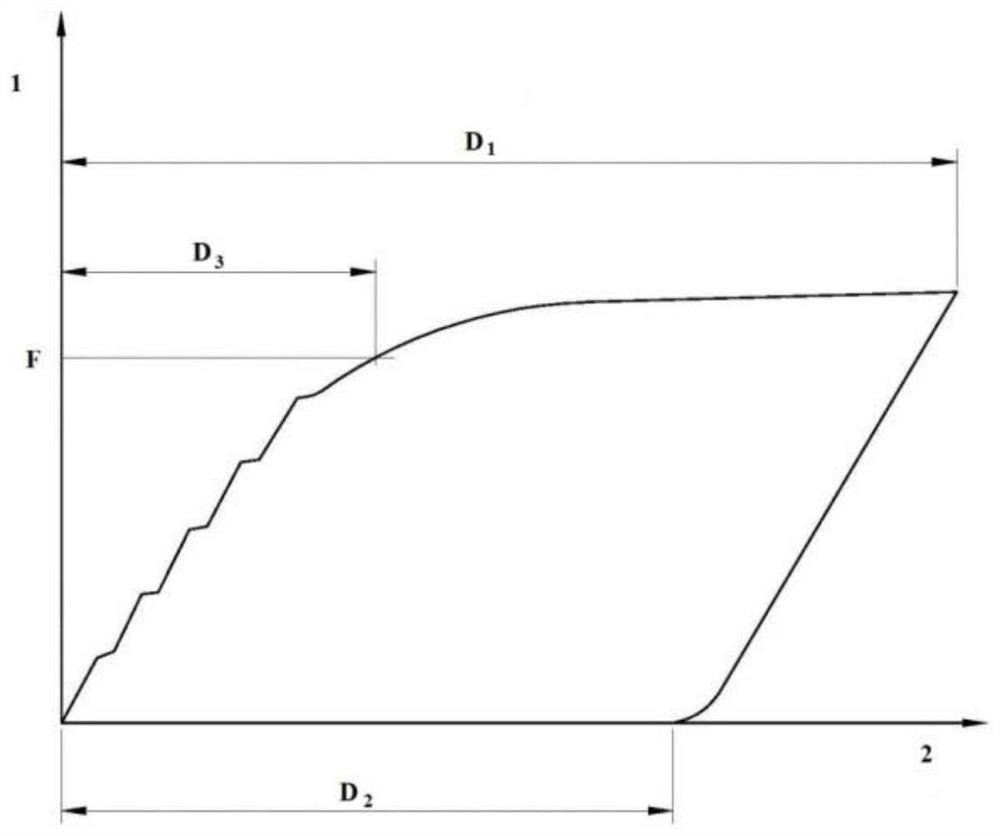Longitudinal rail restraint test method for rail transit
A test method and technology for rail transit, applied in the testing of mechanical components, the testing of machine/structural components, force/torque/work measuring instruments, etc., can solve the problems of inaccurate test results, difficult operation, and complicated test process.
- Summary
- Abstract
- Description
- Claims
- Application Information
AI Technical Summary
Problems solved by technology
Method used
Image
Examples
Embodiment
[0024] Such as figure 2 As shown, for fasteners designed symmetrically with elastic strips, the sleeper 4 is first fixed by the rigid fixture 5, and then the rail 1 is fixed on the sleeper 4 by a single fastener 2, and then the load is applied longitudinally along the rail 1; for the spring strip staggered design Fix the sleeper 4 first, then fix the rail 1 on the sleeper 4 or other supporting structures through two fasteners 2 (the spacing between the fasteners is the standard spacing), and then apply the load along the longitudinal direction of the rail 1. A load-displacement test recording instrument 3 is connected between the rail 1 and the sleeper 4 .
[0025] During the loading process, record the displacement of the rail relative to the sleeper until the loading ends when the rail slides. Then the maximum load under the condition that the rail does not undergo inelastic deformation is obtained on the force-displacement diagram.
[0026] The load-displacement test rec...
PUM
 Login to View More
Login to View More Abstract
Description
Claims
Application Information
 Login to View More
Login to View More - R&D
- Intellectual Property
- Life Sciences
- Materials
- Tech Scout
- Unparalleled Data Quality
- Higher Quality Content
- 60% Fewer Hallucinations
Browse by: Latest US Patents, China's latest patents, Technical Efficacy Thesaurus, Application Domain, Technology Topic, Popular Technical Reports.
© 2025 PatSnap. All rights reserved.Legal|Privacy policy|Modern Slavery Act Transparency Statement|Sitemap|About US| Contact US: help@patsnap.com



